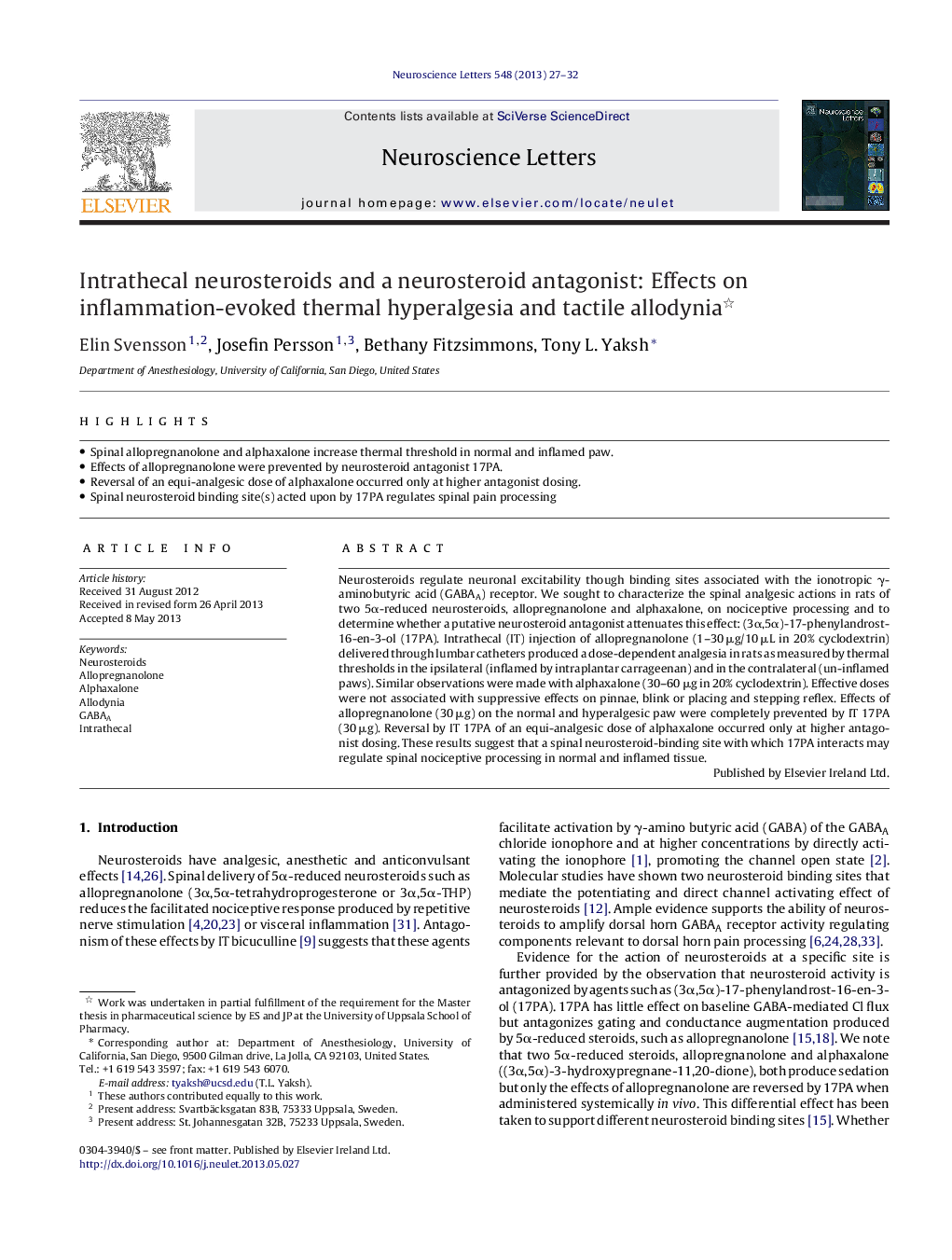| Article ID | Journal | Published Year | Pages | File Type |
|---|---|---|---|---|
| 6282958 | Neuroscience Letters | 2013 | 6 Pages |
Abstract
Neurosteroids regulate neuronal excitability though binding sites associated with the ionotropic γ-aminobutyric acid (GABAA) receptor. We sought to characterize the spinal analgesic actions in rats of two 5α-reduced neurosteroids, allopregnanolone and alphaxalone, on nociceptive processing and to determine whether a putative neurosteroid antagonist attenuates this effect: (3α,5α)-17-phenylandrost-16-en-3-ol (17PA). Intrathecal (IT) injection of allopregnanolone (1-30 μg/10 μL in 20% cyclodextrin) delivered through lumbar catheters produced a dose-dependent analgesia in rats as measured by thermal thresholds in the ipsilateral (inflamed by intraplantar carrageenan) and in the contralateral (un-inflamed paws). Similar observations were made with alphaxalone (30-60 μg in 20% cyclodextrin). Effective doses were not associated with suppressive effects on pinnae, blink or placing and stepping reflex. Effects of allopregnanolone (30 μg) on the normal and hyperalgesic paw were completely prevented by IT 17PA (30 μg). Reversal by IT 17PA of an equi-analgesic dose of alphaxalone occurred only at higher antagonist dosing. These results suggest that a spinal neurosteroid-binding site with which 17PA interacts may regulate spinal nociceptive processing in normal and inflamed tissue.
Related Topics
Life Sciences
Neuroscience
Neuroscience (General)
Authors
Elin Svensson, Josefin Persson, Bethany Fitzsimmons, Tony L. Yaksh,
